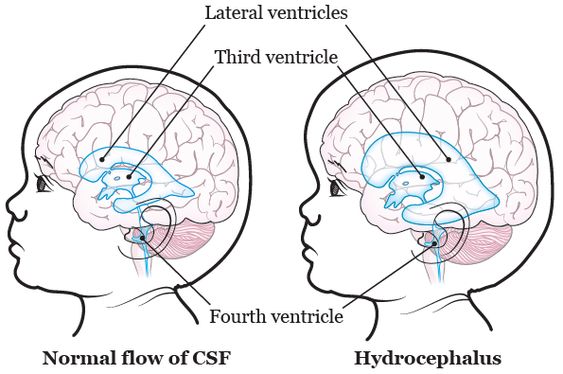Introduction
Hydrocephalus is a condition that occurs when there is an excessive buildup of cerebrospinal fluid (CSF) in the brain. CSF is a clear, colorless fluid that surrounds the brain and spinal cord, providing cushioning and protection. Normally, CSF flows through the brain's ventricles (hollow spaces) and is absorbed into the bloodstream. However, in hydrocephalus, the flow or absorption of CSF is disrupted, leading to an accumulation of fluid within the ventricles.

This buildup of CSF can put pressure on the brain, causing a variety of symptoms and potentially leading to serious complications if left untreated. Hydrocephalus can affect individuals of all ages, from infants to older adults. Understanding the causes, symptoms, diagnosis, and treatment options for hydrocephalus is crucial for effective management and improved outcomes.
Causes of Hydrocephalus
Hydrocephalus can be caused by a variety of factors, including:
- Congenital defects: Some babies are born with structural abnormalities that affect CSF flow, such as a narrow aqueduct of Sylvius.
- Acquired conditions: Head injuries, infections (e.g., meningitis), tumors, and bleeding in the brain can disrupt CSF circulation.
- Unknown causes: In some cases, the cause of hydrocephalus remains unknown.
Symptoms of Hydrocephalus
The symptoms of hydrocephalus vary depending on the age of onset, the severity of the condition, and the individual's overall health. Some common symptoms include:
- Infants: Rapid head growth, bulging fontanelle (soft spot on the head), vomiting, sleepiness, seizures.
- Children and adults: Headaches, nausea, vomiting, blurred vision, difficulty with balance and coordination, cognitive impairment, personality changes.
Diagnosis of Hydrocephalus
Diagnosing hydrocephalus typically involves a combination of:
- Physical exam: A doctor will assess the patient's symptoms, head size, and neurological function.
- Imaging tests: CT scans or MRI scans can provide detailed images of the brain, revealing enlarged ventricles and other abnormalities.
Treatment of Hydrocephalus
The primary treatment for hydrocephalus is surgical intervention to relieve pressure on the brain. The most common procedure is the placement of a shunt, a flexible tube that diverts excess CSF from the brain to another part of the body, such as the abdomen, where it can be absorbed.
In some cases, a procedure called endoscopic third ventriculostomy may be an option. This involves creating a small opening in the floor of the third ventricle to allow CSF to bypass the obstruction.
Treatment for hydrocephalus is typically lifelong, and regular monitoring is essential to ensure the shunt or other treatment remains effective. With appropriate management, individuals with hydrocephalus can often lead fulfilling lives.

.jpg)